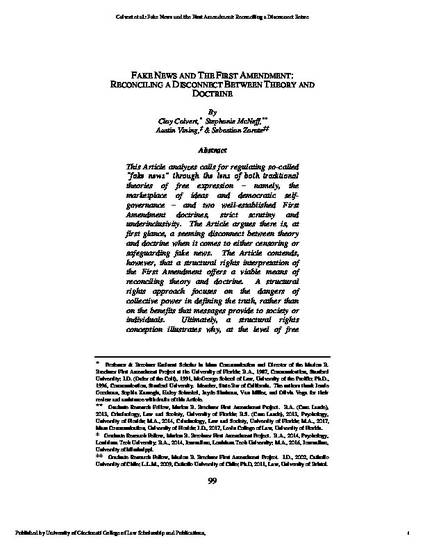
This Article analyzes calls for regulating so-called “fake news” through the lens of both traditional theories of free expression – namely, the marketplace of ideas and democratic self-governance – and two well-established First Amendment doctrines, strict scrutiny and underinclusivity. The Article argues there is, at first glance, a seeming disconnect between theory and doctrine when it comes to either censoring or safeguarding fake news. The Article contends, however, that a structural rights interpretation of the First Amendment offers a viable means of reconciling theory and doctrine. A structural rights approach focuses on the dangers of collective power in defining the truth, rather than on the benefits that messages provide to society or individuals. Ultimately, a structural rights conception illustrates why, at the level of free speech theory, the government must not censor fake news.
